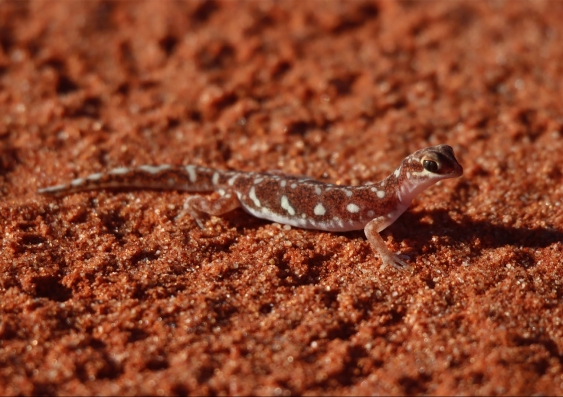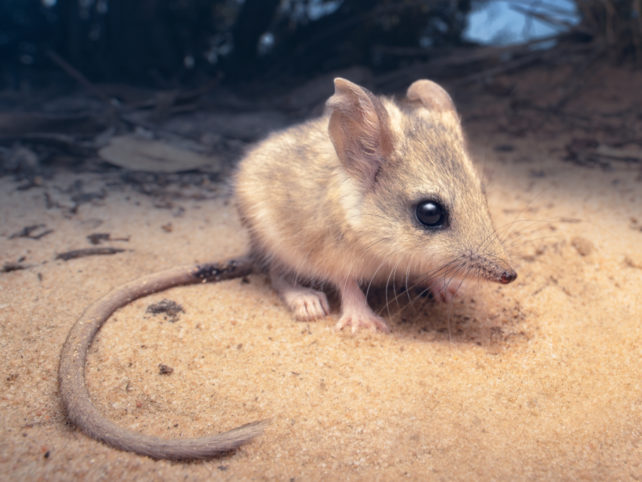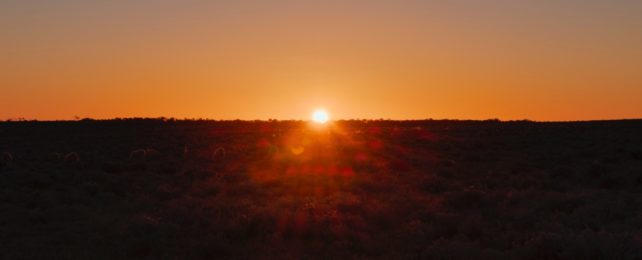Living in an arid region is a precarious business. Harsh conditions make growing tough for plants, meaning every shoot and leaf is all the more precious, even when they're dead and decaying.
A new study conducted at Boolcoomatta Station Reserve in outback South Australia has demonstrated the importance of vegetative leftovers in fueling a desert ecosystem – and revealing an unintuitive alliance between termites and dingoes.
"A lot of research in arid ecosystems has focused on the green food webs that follow 'boom periods' prompted by large rainfall events," says University of New South Wales (UNSW) conservation biologist Mike Letnic.
"These 'boom periods' see spectacular growth and blooming of desert plants and increases in the populations of many animal species that feed on the growth, such as herbivores and rodents. Drier periods are a lot less exciting and consequently have attracted less attention."
But these dry times are important, as they dominate life's existence in arid environments.

Researchers in this outback study compared control plots, where large herbivores such as kangaroos and the occasional goat freely grazed, against one-hectare fenced enclosures where the voracious vegetation munchers were kept out.
In doing so, UNSW ecologist and lead author Baptiste Wijas and colleagues were able to reveal the impact of large herbivores on brown food webs.
Brown food webs are those where the primary food source is decaying vegetation rather than living plants. This rotting plant tissue is recycled back into food energy for the rest of the web when consumed by detritivores, like termites and worms, which are nutriment for small vertebrates.
Brown webs exist in most habitats, but their impact may be more obvious in areas with fewer resources, like drylands and deserts.
The researchers found the plots of land which were exposed to kangaroo overpopulation and feral goats showed reduced amounts of both decaying plant material and living vegetation. This caused a cascade of responses throughout the entire web.
"We found that less dead biomass due to overgrazing herbivores can lead to a reduction in termites," explains Wijas.
"Fewer termites, the principal decomposers in these environments, could ultimately result in a reduction in the number of lizards and small mammals in arid ecosystems, as many of these small vertebrates feed on termites."
These findings contrast with studies done in more fertile regions, where increased herbivory actually pumps up the brown food web and enhances nitrogen cycling.
In the desert, however, as there's already such a small amount of plant growth that herbivores gobbling up too much of the vegetation means there are not enough leftovers to become the dead plant stuff that feeds detritivores.
This cascades into fewer small scurrying lizards and mammals like dunnarts – teeny marsupials native to Australia – that feed on the detritivores, and less food for the larger animals such as eagles and snakes that eat the scurriers in turn.

It's long been established that kangaroos are over-abundant across arid Australia. This problem has arisen, at least in part, because there's a critical component of both the green and brown food webs missing from the equation: an apex predator.
Humans eradicated dingoes from much of the arid landscape to protect grazing sheep, even going so far as to construct a massive, 5,600-kilometer-long (3,490 mile) dingo fence across south-eastern Australia.
"Kangaroos occur in large numbers across much of arid Australia because populations of their principal predator, the dingo, have been suppressed. The creation of artificial water points to supply water to livestock, and inadvertently to kangaroos, have also helped kangaroos to survive through dry periods," explains Letnic.
The study area is within this fence at Boolcoomatta Station Reserve, traditionally owned by the Adnyamathanha and Wilyakali people, where there are so few dingoes they're considered 'functionally extinct'.
Research around the fence has previously revealed just how much of an impact the lack of these apex predators can have on vegetation levels.
Removing dingoes from the landscape has driven native Australian grasslands to give way to problematically overabundant woody shrublands. These provide cover from which feral cats and foxes can pounce out and devour native endangered marsupials unchecked. The excess grazing has changed the shapes of sand dunes, and the difference in vegetation patterns can even be seen from space.
Yet, unbeknownst to much of the public, culling of one of the most crucial parts of the arid continent's natural food webs continues under the guise of a 'wild dog problem'.
While more work is needed to confirm the results, as plot sizes in the study were small and the team did not directly link the abundance of termites to vertebrate numbers, the new findings add to mounting research revealing just how reliant different species within ecosystems are on each other, even those seemingly unconnected, like dingoes and termites.
"Our findings are one of the first to show in arid ecosystems that where herbivores were excluded, there was greater biomass of dead grass. In turn, there were more termites and predators of termites inside the exclosures," concludes Wijas.
This research was published in Ecosystems.
